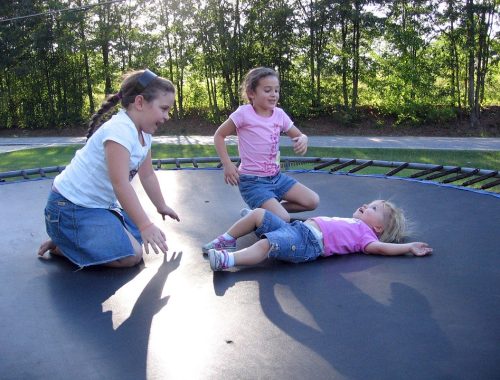
2 Steps to Manage a Child’s Anger
2 Steps to Manage a Child’s Anger
Summary
– Step 1: Respect your child’s anger
– Step 2: Responding to your child’s anger
Children’s tantrums are natural, even if our role as parents is to teach them how to manage their emotions. How do we do this? Here are some tips on understanding and dealing with your child’s anger.
1. Respect your child’s anger
Start by telling yourself that anger is a healthy emotion. It is often the result of frustration. It should be respected and heard.
– Before the age of 2, children don’t have the words to say what’s wrong and will be tempted to use shouting, anger, and tantrums to get what they want.
– Between the ages of 2 and 3, this is the “no crisis”. The child asserts himself as an individual in his own right. They want to show that they can do what their parents do: oppose, say no, choose.
– After the age of 3, anger is often a sign that the child is overwhelmed by the emotions he is experiencing. They don’t know how to deal with it yet; it’s overflowing!
– At any age, tantrums are possible, and even adults are sometimes angry (watch yourself!). The challenge is not to repress or hide your anger. You have to learn to accept it and to live it positively. This learning process takes time, so please be patient.
Anger is not the only emotion that is difficult to manage: fear, sadness, etc., are also stages for children. It is, therefore, necessary to regularly talk with your children about emotions, put words to them, let them express themselves, and read the children’s books on these themes. Children must be aware of the whole range of emotions they will experience and come across.
2. How to react to a child’s anger

Children must first learn to recognize their emotions, name them, and identify what causes them. Therefore, when your child has a tantrum, help him or her to determine his or her feelings:
– Instead of saying “stop, calm down, stop…”, say instead, “you look angry, you feel like yelling, crying…” and try to find out why: “tell me what’s wrong”. Understanding why the child became angry, the hidden reason is necessary for the child to make connections and later find solutions before becoming angry.
– If it is not possible to talk during the anger, try to do so when the child has calmed down.
The child needs you. Touch them, and you may even be able to hug them if they let you. If they push you away or hit you, offer to give them a moment alone to be quiet. The point is not to punish him but to find a way to take the pressure off. If the child hits you or someone else, remind him/her of the rules: “no hitting in this house”.
– In all cases, stay calm.
– If you have decided not to give in to a tantrum (I want a piece of candy, give me that, etc.), stand your ground. Otherwise, the child may use anger as an excellent way to get what he wants: you may see repeated tantrums.
After the anger: it is necessary to explain to your child that it is normal to experience emotions that overwhelm us (find your words to tell him) but that it is by communicating that we find solutions.
Hope this post helps you manage a child’s anger. Please remember to share your experience in the comments below.
Read more:

Do Sanctions Shape Kids Positively?
You May Also Like

6 Tips To Help Boost Your Child’s Immune System
2022-06-17
Best Games for Children and Adults
2022-05-30
